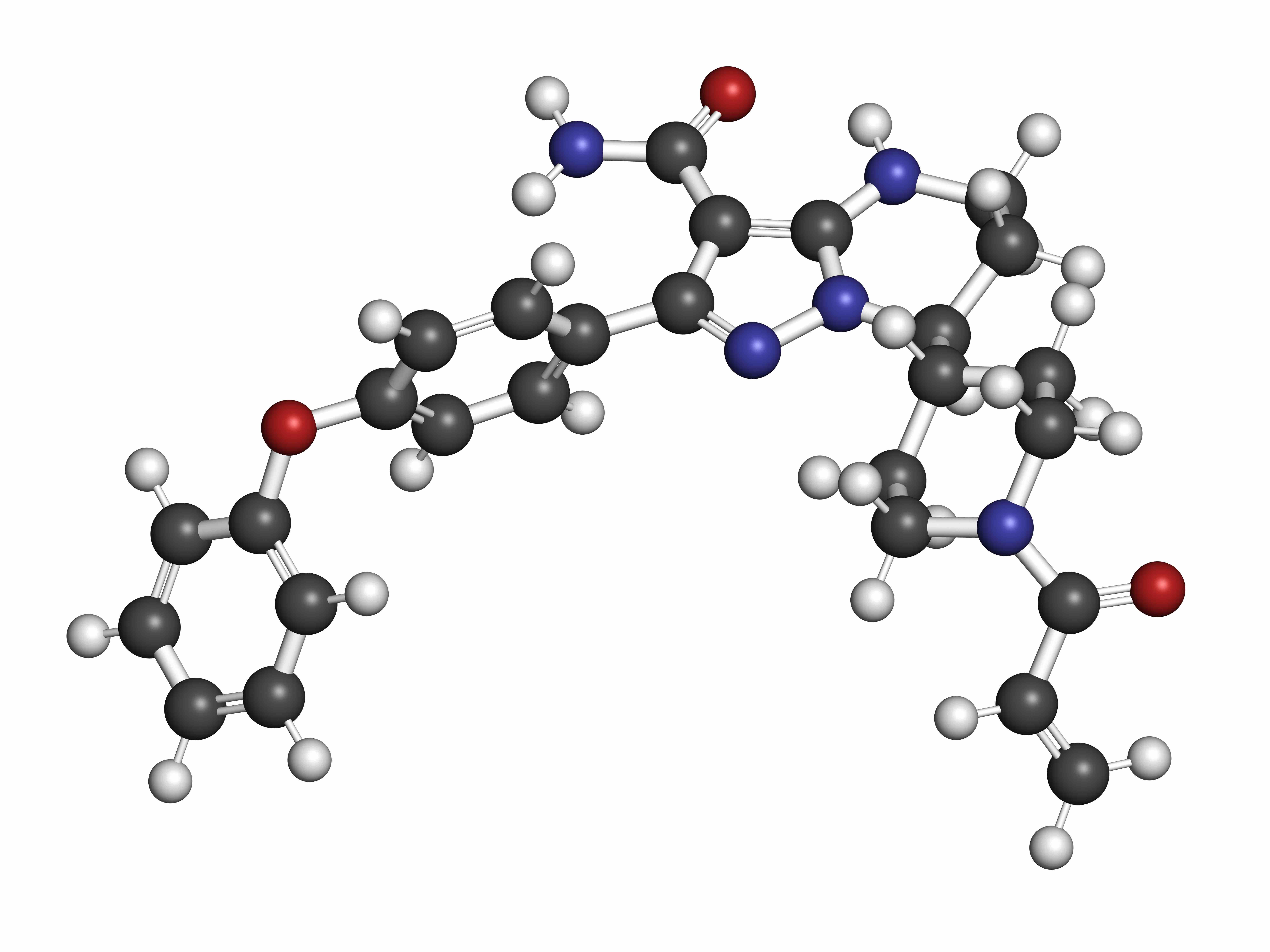Article
Review of BTK Inhibitors for Waldenström Macroglobulinemia Highlights Pros, Cons, and Future Directions
Author(s):
Bruton tyrosine kinase (BTK) inhibitors are currently the only FDA-approved agents indicated specifically for patients with Waldenström macroglobulinemia.
A recent review of Bruton tyrosine kinase (BTK) inhibitors in Waldenström macroglobulinemia (WM) summarizes current data on the safety and efficacy of BTK inhibitors in this patient population, as well as relevant issues and future directions.
BTK inhibitors are currently the only FDA-approved agents indicated specifically for patients with WM, a type of non-Hodgkin lymphoma characterized by the accumulation of lymphoplasmacytic cells in bone marrow, lymph nodes, and other organs. The course of the disease is typically indolent and can often be managed with active surveillance when patients are asymptomatic, but most patients eventually require therapy.
Current FDA-approved therapies for WM include ibrutinib, which was the first approval specific to WM in 2015; ibrutinib plus rituximab, which was approved in 2018; and zanubrutinib, approved in 2021. Other management options include combinations of alkylating agents, nucleoside analogues, proteasome inhibitors, and anti-CD20 monoclonal antibodies.
The review, published in the American Journal of Hematology, notes that ibrutinib and zanubrutinib each have benefits and drawbacks. Ibrutinib was the first WM-targeted drug approval, and 3 independent, prospective trials have shown its efficacy as a single agent. It is currently considered a standard of care for WM and has made chemotherapy-free treatment possible for these patients. It also provides a once-daily, single-pill option that is easy for patients.
While it has potential side effects, including cardiac toxicity and increased bleeding risk, ibrutinib has a tolerable toxicity profile for most patients—an important factor in WM management, considering the disease itself is typically indolent. Still, some patients—particularly those with CXCR4 mutations—may have delayed and less durable responses. Its potential cardiac side effects also limit its use in those with cardiac comorbidities.
In the development of second-generation BTK inhibitors, such as zanubrutinib, there are opportunities to improve efficacy, including progression-free survival. Increased rates of complete responses are another goal in ongoing research.
“Optimally, the higher efficacy should be accompanied by improved tolerability, which would mean to avoid ibrutinib-associated side effects without adding new ones,” the authors wrote. “Finally,administration should be as easy as for ibrutinib with once-daily oral intake. Ibrutinib has set a very high bar, and it will not be facile to develop BTK inhibitors to outcompete ibrutinib.”
Zanubrutinib has shown increased sensitivity for BTK compared with other kinases and therefore may have fewer off-target effects, meaning a lower rate of toxicities than treatment with ibrutinib. Studies support this notion across B-cell malignancies, including WM, and have found zanubrutinib to completely inhibit BTK as well as sustain BTK inhibition during treatment. It is taken as either 2 pills twice daily or 4 pills once daily—a slightly higher burden compared with ibrutinib’s single pill once daily. However, zanubrutinib has also been shown less prone to pharmacokinetic changes due to renal dysfunction or mild to moderate hepatic impairment.
“Therefore, the key discriminating factor in the selection of which BTK inhibitor to use for patients with WM is the tolerability of the BTK inhibitor,” the authors wrote. “Atrial fibrillation, contusion, diarrhea, peripheral edema, hemorrhage, muscle spasms, and pneumonia, as well as adverse events leading to treatment discontinuation, were more common with ibrutinib.” Rates of neutropenia and febrile neutropenia, however, have been found higher in zanubrutinib versus ibrutinib.
In summary, the decision to prescribe zanubrutinib or ibrutinib will be unique to each patient, as both are generally safe and effective but have pros and cons regarding side effect profiles, ease of dose administration, and a need for longer-term follow-ups for zanubrutinib to become as thoroughly researched as ibrutinib.
Additional covalent BTK inhibitors being researched include acalabrutinib, tirabrutinib, and orelabrutinib. Non-covalent BTK inhibitors under investigation include pirtobrutinib and nemtabrutinib.
With currently available BTK inhibitors, management issues such as the risk of cardiac arrythmia and bleeding, and a possible need for iron supplementation can be improved upon. Withdrawal symptoms are also possible when BTK inhibition is halted for surgery or adverse event management.
“Despite the growing armamentarium of safe and effective drugs to treat WM, there are still substantial unmet needs, which include a scarcity of complete responses, lower efficacy of BTK inhibitors in WM patients with nonsense CXCR4 mutations, and the indefinite duration of currently FDA-approved treatments,” the authors wrote.
Still, the low toxicity profiles and high activity of BTK inhibitors in patients with WM make these agents key in the development of chemotherapy-free combination regimens that improve the depth and durability of responses in the future. Prospective trials are assessing a variety of combinations in this realm, including doublet and triplet regimens that hold promise for this patient population.
Reference
Castillo JJ, Buske C, Trotman J, Sarosiek S, Treon SP. Bruton tyrosine kinase inhibitors in the management of Waldenström macroglobulinemia. Am J Hematol. Published online November 22, 2022. doi:10.1002/ajh.26788




